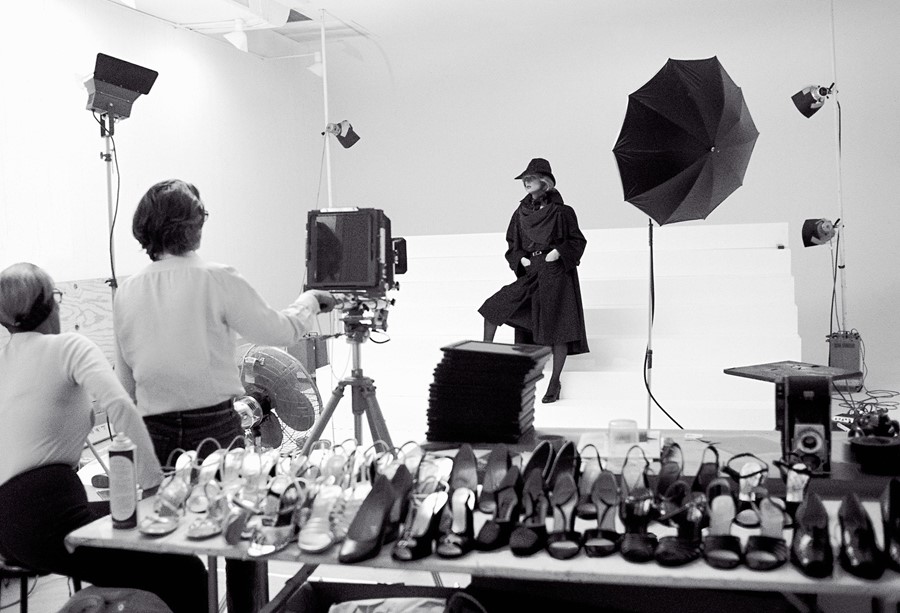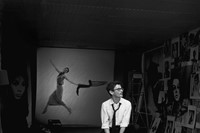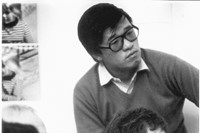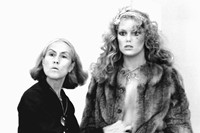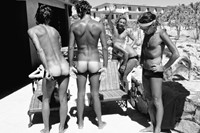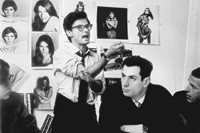Hired by Richard Avedon in 1964, Gideon Lewin’s new book Avedon – Behind the Scenes 1964-1980 poignantly chronicles the pair’s 16-year partnership
After graduating from the Art Center College of Design in Pasadena, California, September 1964, Jerusalem-born photographer Gideon Lewin travelled to New York to interview for a job with Richard Avedon. He arrived at 110 East 58th Street with a leatherbound portfolio in hand and took the elevator up to the fourth floor. Just as he was about to enter Avedon’s studio, the famed model Wilhelmina breezed out. “I knew I was in the right place,” Lewin tells AnOther.
After interviewing with the studio manager, Lewin had a casual conversation with Avedon, who was on the phone, and was hired on the spot. “I was in shock,” Lewin recalls. “I said, ‘I don’t even have an apartment here’. Avedon told me, ‘Take your time. I’m going to Spain. You start with Hiro, my associate, and I will see you when I come back. I hope you get an apartment. I love an international team.’”
That auspicious encounter marked the start of a 16-year partnership poignantly chronicled in the new book Avedon – Behind the Scenes 1964-1980, a lavish monograph featuring intimate stories and behind-the-scenes photographs from some of the best moments in Avedon’s career. Whether photographing legends like Sophia Loren, Audrey Hepburn, Cher, Veruschka, or Twiggy, Lewin paints a revealing portrait of Avedon, the artist and the man. Here, Lewin shares his memories of what it was like to work side-by-side with one of the greatest photographers of the 20th century.
“Avedon understood my need for creativity so I also did my own work within the studio. I had my own clients. The salary was not high. I started at $65 a week, which was barely enough to pay rent in New York in those days. I took over as studio manager in 1965 after the previous studio manager fell ill and decided he had enough. I wasn’t quite ready for this because I had a student visa at the time. Avedon insisted I stay and said, ‘I want to you have the experience. We are going to worry about it later.’
“It was a collaboration in many ways. I got in tune with his thoughts and preparations for his various photographs. I became the nerve centre of the studio. The synchronisation came to a point on set. The lighting was totally fluid, which meant I held the lights in my hand, moving with the model when she was running and jumping to make sure the light was in the perfect spot every time. In my mind, I could hear the click of the shutter before it was clicked. I knew exactly when the picture was going to be taken. The same with portraits; I created the lights for every shot.
“Every day was rewarding no matter how difficult or how much fun it was. It was about excellence, about achieving the best, never compromising, and total dedication to the craft; there is a solution to every problem if you think hard enough. There was nobody like him before or after. He was the most dedicated photographer I know, working 24 hours a day. But he had a fun side, too. He could be like a kid, very playful. There was one day he decided to dress up as a pixie doll and show what he learned from the movies of Fred Astaire.
“The end of the relationship came when I opened my own studio in 1980. It was also around my birthday and he came with his staff, brought me the same dishes he had at the studio, food, champagne, a poem that everybody participated in with their comments, and a print of his most iconic photograph, Dovima with Elephants, that had hung at the studio and is very rare because it was made from the original negative.
“The original negative had a stain that we could not remove so I created a new negative for his 1978 exhibition at The Met. Avedon then instructed us to destroy all the previous prints made from the original negative. There are only two left: one of them is at the Smithsonian and one is in my possession. It’s a treasure that was passed on to me, which really is a monument to our relationship.”
Avedon – Behind the Scenes 1964-1980 is out now, published by powerHouse Books.
